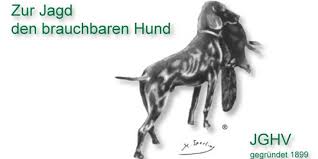The Nihon Ken as working dogs - sporting dogs & hunting dogs, suitability and drive
All dogs were once bred as working dogs. Be it as herding dogs, hunting dogs, or companion dogs—each has its advantages and disadvantages. Today, the companion and family character predominates in all our dogs. Herding and driving dogs no longer need to lead huge flocks of sheep. Some breeds have earned true fame and are firmly established in hunting. Many breeds are therefore threatened with extinction, having a small gene pool. Other breeds have retained their usefulness in other ways by moving into a different "sector." Therapy and assistance dogs have gained much greater importance.
What is the situation specifically with the Nihon Ken?
We know that all Nihon Ken were bred as hunting dogs. However, some of these are no longer comparable to our current show lines. If you breed solely for performance, appearance is secondary. Accordingly, many Nihon Ken have different tails, colors, and markings. The quality of their coat is also different. Their behavior is different. They have different personalities.
There are certainly still working lines, as in other breeds. However, their importance in breeding is currently very low. Nevertheless, all Nihon Ken can be used in various sports, including canicross, agility, protection dog sports, hunting, therapy, and much more.
It's important to remember that some of these archetypal breeds still have strong instincts. This should be taken into account when training them.
Nihon Kens are classified as tracking dogs. They are characterized by their wonderful noses, a talent that can be used to keep them busy. There's nothing more enjoyable for a Nihon Ken than nose work, such as tracking or similar.
What can we say directly about the Nihon Ken as a hunting dog?
Our knowledge is as follows...
The Shiba They still have a drive, especially for small game/small mammals and birds. They are sometimes used as hunting dogs. However, we believe that these dogs do not have a suitability test and fall more into the "private" category.
The Akita still has a very strong guarding and protective instinct. They are so fearless that they don't even shy away from confronting a bear, which is what they were bred for. A video from the USA shows this.
The Kai Ken He has some good retrieving skills. He is widely used as a therapy and rescue dog in his home country.
The Hokkaido He also has a passion for hunting but is not bred as a working breed like his aforementioned counterparts. In Europe, there is one Hokkaido trained for hunting who has also successfully passed a hunting test.
The Shikoku He has a great interest in and drive for small animals, as well as hoofed game and predators. Currently, he is being bred more frequently for hunting purposes (Japan - preservation and protection of the monument). There is currently no Shikoku with a hunting license. Use and suitability are determined by free-ranging or penned activities.
The Kishu Of all the Nihon Ken, it still has the strongest working lineage and, accordingly, the highest drive. Even if some ancestors didn't hunt, this isn't a decisive factor in its suitability/drive. On the contrary, it has strong instinctual roots and is the most widely represented hunting breed in Japan. The Kishu also has representatives in Europe who have successfully passed a hunting suitability test and are hunting.
In Japan, Nihon Ken are increasingly being reintroduced to wild animals. The preservation and protection of this heritage site requires this. Some breeding shows are once again being held with wild animal encounters. For example, Hokkaido is being introduced to bears (in a cage for protection), and Shikoku is being tested on wild boars.
Now we need to go into a bit of detail to explain the use and suitability of hunting dogs, especially in Germany. The major umbrella organization for hunting dogs is the JGHV e. V. - Hunting Dog Association, founded in 1899. This organization is further divided into different federal states. In each state, a hunting dog must pass its tests to be officially allowed to hunt!
The only Nordic breed currently is the Laika, which is one of the 103 recognized breeds of the German Shepherd Dog Association (JGHV). Therefore, no Nihon Ken or, for example, an Elkhound can legally hunt in Germany. It should also be noted that there are also different hunting practices/hunting disciplines, which can make suitability more difficult.
The DNCH e.V. offers a suitability test for all its member breeds. Whether and to what extent this will be accepted by the respective regional chapters of the JGHV (German Hunting Club). What is certain is that there may be problems with claims and insurance coverage. A successful test must be proven for each subject. Without this "certificate," a dog is not allowed to hunt.
The prerequisite for admission to the examinations is a recognized pedigree!
Hunting dogs usually receive a separate pedigree. If the breeding associations are affiliated with the JGHV, the pedigrees may bear the so-called "Sperlingshund" (sperling dog) symbol (graphic above). This is the quality and approval seal for hunting dogs.
One innovation is phenotyping. A double-edged sword. Here, dogs, primarily mixed breeds, are assigned a breed based on their appearance and are therefore allowed to participate in the tests even without papers. Now consider a Shikoku with papers, which is phenotyped as a Laika. It is therefore declared a mixed breed or Laika in order to take a test, which it is not. Not really the point...

Photo by Akashima Kennel - Katja Weber







